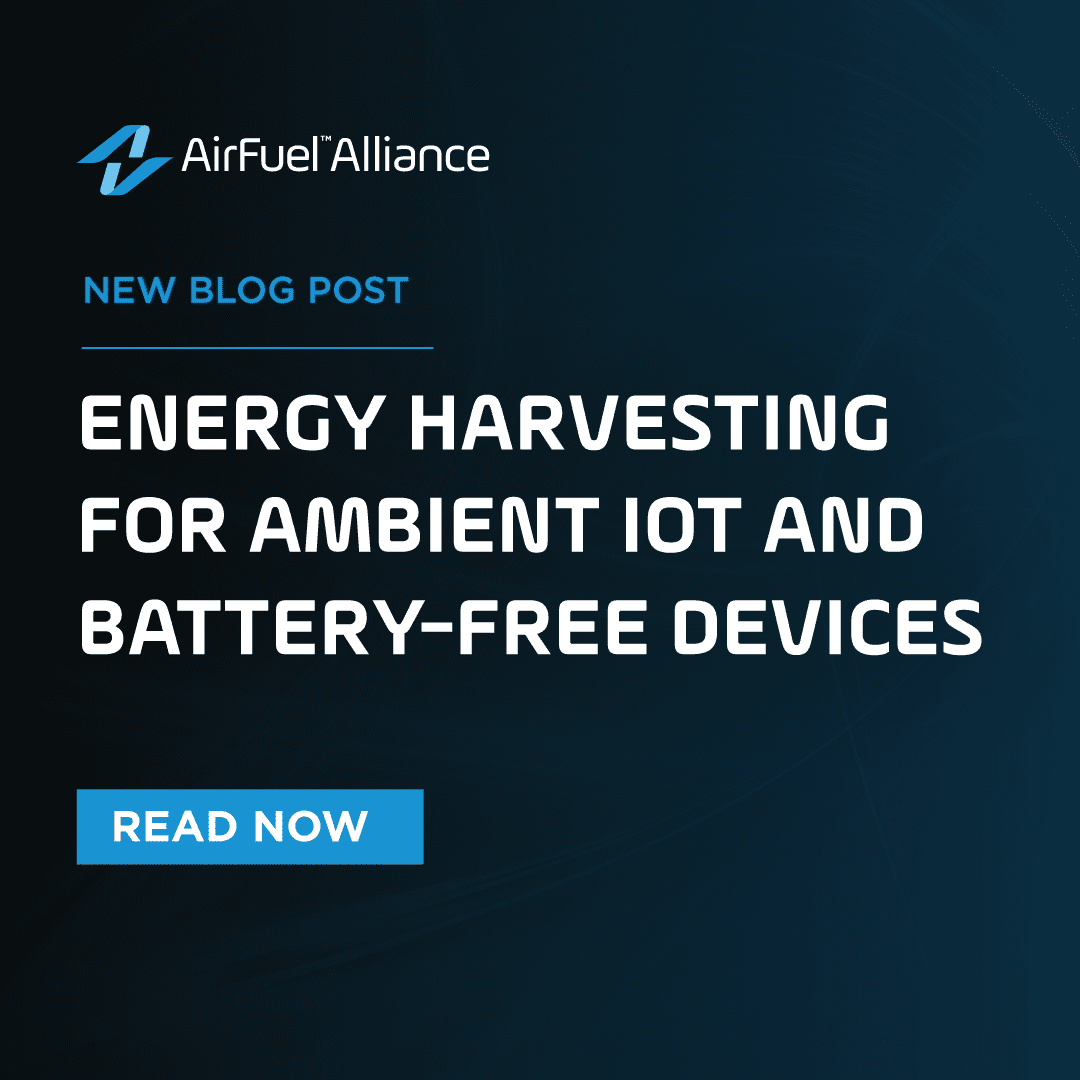Coil Design Tools
PRU Coil Calculator
If your browser doesn't support saving, copy all contents in the text box below and paste into a new dxf file.
| Calculated Parameters | |
|---|---|
| Trace Width |
|
| Trace Spacing |
|
| Magnetic Area |
|
| Dynamic Range |
|
Coil Induced Voltages
| RMS | PEAK | |
|---|---|---|
| Absolute Max Voltage |
|
|
| Max Operating Voltage |
|
|
| Typical Max Operating Voltage |
|
|
| Typical Nominal Operating Voltage |
|
|
| Min Nominal Operating Voltage |
|
|
| Min Boot Voltage |
|
|
Definition of Parameters:
General Terms & Acronyms:
- PTU: Power Transmit Unit
- PRU: Power Receive Unit
- Resonant Matching Network: Reactive component used to create resonant or near-resonant conditions for optimal wireless power transfer
- PTU Resonator: PTU coil connected to its PTU with resonant matching network (creates magnetic field)
- PRU Resonator: PRU coil connected to its electronics with a resonant matching network (converts magnetic field to electrical energy)
- Charge Area: Area at a designated height above the PTU Resonator designated for PRU operation
- BSS: Baseline System Specification or the document containing the requirements for designing an AirFuel Magnetic Resonance device.
Inputs:
- Outer Coil Length / Width: Length and Width of outside edge of coil respectively.
- Number of Turns: Number of coil turns inside the designated Trace Span.
- Trace Span: Distance in which all the coil turns are located from outer edge of coil inward.
- Trace Fill: Ratio of Trace Width to Trace Spacing in percent within the Trace Span.
- μRelative at Coil: The effective relative permeability at the coil. For a coil in free-space, this value is 1. If metallic or conductive materials are near the coil, this value can decrease below 1. If ferrite is placed behind the coil, the effective permeability can increase above 1. Care should be taken to ensure any ferrite present does not saturate or exhibit significant non-linear effects for this calculator to be a reasonably approximation.
Calculated Parameters:
- Trace Width / Spacing: The copper line on a printed circuit board is the trace and it has a designated width whereas the spacing is the distance between the traces. This is calculated based on the Trace Span and Number of Turns.
- Magnetic Area: The effective magnetic area is the average area of the coil multiplied by the Number of Turns. This is an important parameter for calculating induced coil voltages based on Faraday’s law.
- Dynamic Range: This is the expected factor for the range of induced voltages (or average field levels) from maximum to minimum that can be expected in worst-case spatial conditions within an AirFuel designated charge area at a constant alternating current value in the PTU Resonator.
Coil Induced Voltages:
In general, these are the ranges of voltages that can be induced on the PRU coil in an open circuit condition if the coil is placed directly on the charge area surface and considering 1) that the PRU can be anywhere in the designated PTU Charge Area (i.e. spatial variation), and 2) that the PTU Resonator can have a current range from some minimum to some maximum according to the BSS in order to optimize behavior for one or more PRUs (i.e. current variation).
The induced voltages do not necessarily represent the voltages under loaded conditions. For loaded conditions, the quality factor of the coil (i.e., overall AC resistance of coil) must be considered as a voltage drop at the coil terminals will be inversely proportional to the quality factor according to Ohms law. Additional consideration must also be given to the resonant matching network, rectifier, and other electronics which follow the output of the PRU coil.
- Absolute Max Voltage: The maximum induced voltage that is expected based on the absolute maximum field level allowed by the BSS. This can only occur when a PTU Resonator is at its absolute maximum current level and the PRU coil is at an absolute maximum coupling position on the charge surface.
- Max Operating Voltage: The maximum typical induced voltage that is expected when the PTU Resonator is at operating at its maximum required current and the PRU coil is in the maximum coupling position on the charge surface in the charge area.
- Typical Max Operating Voltage: The median typical induced voltage that is expected when the PTU Resonator is operating at its maximum required current and the PRU coil is in a nominally coupled position on the charge surface in the charge area.
- Typical Nominal Operating Voltage: The median typical induced voltage that is expected when the PTU Resonator is operating at its nominal required current and the PRU coil is in a nominally coupled position on the charge surface in the charge area.
- Min Nominal Operating Voltage: The minimum induced voltage that is expected when the PTU Resonator is operating at its nominal required current and the PRU coil is in the minimum coupled position on the charge surface in the charge area.
- Min Boot Voltage: The minimum induced voltage that is expected when the PTU Resonator is at its beacon current level searching for the presence of a PRU and the PRU coil is in a minimum coupled position on the charge surface in the charge area. This is the induced voltage at which the Bluetooth LE electronics are required to wake up communicate with the PTU for power transfer negotiations.
Description of Usage:
AirFuel Magnetic Resonance is based on the physics principles of Ampere’s law to generate a magnetic field from an alternating current, Faraday’s law which allows that alternating magnetic field to induce a voltage and/or current in a coil perpendicular to the field generated, and resonance which significantly improves the efficiency of operation and allows a wide range of spatial freedom (i.e., wide range of coupling).
AirFuel Magnetic Resonance operates at 6.78 MHz which has an ISM (Industrial Scientific Medical) designation for operation. At this frequency, high Quality coils are possible using standard copper wire or standard printed circuit board materials. The high Quality factor is a desired feature of Magnetic Resonance because the overall coil-to-coil efficiency is determined by both the coupling between the PTU and PRU resonator as well as the quality factor of these resonators (see https://witricity.com/wp-content/uploads/2016/12/White_Paper_20161218.pdf). For a discussion of additional benefits of this frequency, see the AirFuel blog on this topic here: https://airfuel.org/blog/frequency-choice/.
In the AirFuel Magnetic Resonance Baseline System Specification (BSS), the range of currents that are allowed for operation by a PTU’s Resonator are defined based on specific H-Field criteria. The criteria designate a maximum spatial variation when the current is held constant and a maximum current variation for operation. In a out-of-band Bluetooth LE channel, the PTU and PRU exchange information about operation continuously which allows the PTU to optimize power transfer to one or more PRUs simultaneously.
The PRU Coil calculator is provided “as-is” with no warranty of any kind; however, it is based on the latest BSS H-Field requirements and an assumption that the PRU coil is placed on the PTU charge surface within the charge area. In order to effectively utilize the calculator in the best way possible, additional considerations should be given to maximizing the Quality Factor of the coil to the extent possible within a given system constraints. Additionally, a resonant matching network is applied to the PRU coil terminals which is designed based on resonant principals and which can transform the PRU coil impedance (or induced voltages) to levels that are optimal for the PRU and/or Wireless Power Magnetic Resonance system. The coil, resonant matching network, and rectifier on the PRU should be designed so that the range of voltages seen by downstream electronics is acceptable and optimized to the extent possible. Additional information on AirFuel Magnetic Resonance can be found in the AirFuel Magnetic Resonance BSS, the AirFuel Magnetic Resonance Resonator Acceptance Testing (RAT) document, as well as the AirFuel Magnetic Resonance Conformance Testing Specification (CTS).
Join AirFuel to learn more.
Get Expert Training in Building With Wireless Charging
The AirFuel Resonant Certified Engineer Program is a 6-week virtual training workshop to help you integrate wireless power solutions with spatial freedom into your product. All ACE participants will get a deep dive into technical training and complete the program with a working reference design to integrate into prototypes and concepts.
Education and Resources
五月 8 - Wireless Power Technology Conference & Expo
Wireless Power Technology Conference & ExpoMay 8th - 11th | Kyoto, JapanThe Wireless Power Technology Conference & Expo (WPTCE), is the largest event in the world for wireless power research and industry engagement, covering a wide range of topics,...
Energy Harvesting for Ambient IoT and Battery-Free Devices
IoT is facilitating a smarter and more connected world—so how do we enable IoT devices to reach their full potential? Internet of Things (IoT) sensors are tiny electric devices that feature a microprocessor to process sensor data and a radio to send the data to the...
AirFuel Alliance Announces Launch of AirFuel RF Certification Program
Certification Ensures Multi-Vendor Interoperability Between AirFuel RF Certified Transmitters and Receivers Beaverton, OREGON – January 16, 2024 – AirFuel™ Alliance, a global standards organization dedicated to accelerating adoption of wireless power technology and...
Get Started With AirFuel
Become a Member
As a member of AirFuel Alliance, you’ll get access to today’s best wireless charging technologies, testing services, and industry experts.
Get the Specifications
Get access to the technical specifications for the AirFuel Resonant standard for limited use, or become a member for full access and technical licensing.



